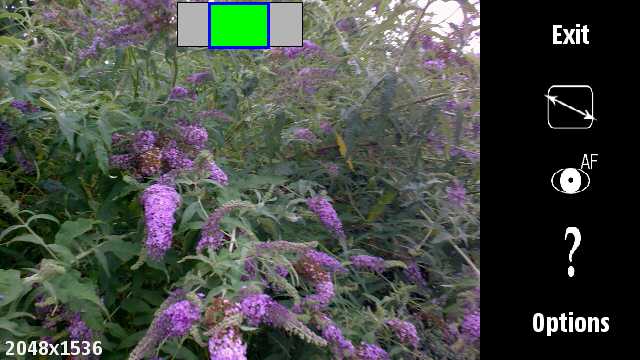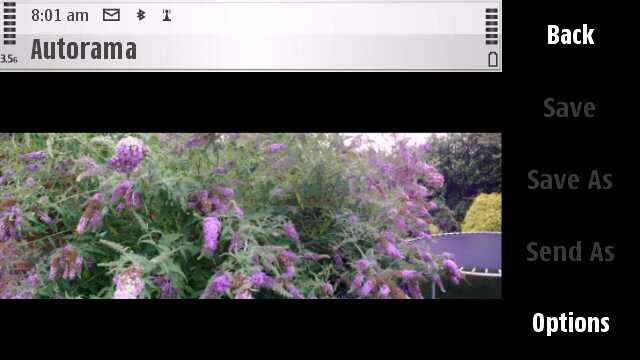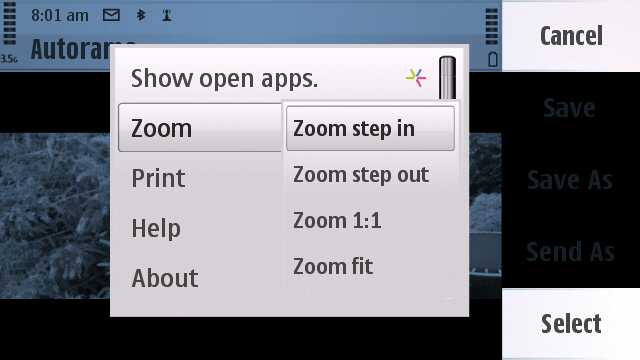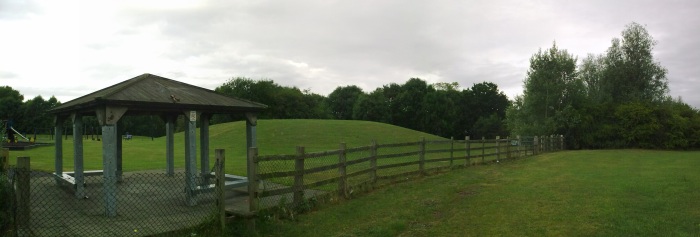Review: Autorama (Photorama)
Score:
75%
Are you a panorama sort of person and do you feel left in the lurch by Nokia buying up the makers of Panoman? Not worry, for Scalado and RAVITEQ have teamed up to produce Autorama, a quick way to produce auto-stitched panoramic photos with next to no Photoshop elbow grease required.
Version Reviewed: 1.02
The premise: a 'panoramic' photo is one where two or more photos, taken side by side, are stitched together in software to produce an extra-wide image that represents a landscape better than a single 4:3 photo ever could.
The story so far: Two applications in the Symbian world had been battling in this field. Bit-side's Panoman was well known for years, going right back to the original Nokia 7650, but Bit-side was bought by Nokia at the start of the year and Panoman is no longer legally available. Interestingly, a version of it's included in the N86's firmware, as part of the main Camera application, and presumably will also make it into the firmware of other camera-centric S60 devices.
The other contender, much newer, was Scalado's Photorama, still available under this name for S60 3rd Edition phones in the Ovi Store, but it has received a name change for the S60 5th Edition version, possibly because 'Photorama' is a well known name in the (ahem) adult entertainment industry and there was obviously a possibility for confusion and association.
And so we come to Autorama, in the Ovi Store for all S60 5th Edition phones - here I'm reviewing it on the Nokia 5800 XpressMusic. Unlike Panoman, and unlike the similar implementation on the N86, Autorama works with the maximum resolution of the camera, i.e. in this case stitching together 3 megapixel images - on the N86, the 'Panoman' derivative produces panoramas that are under 1000 pixels high at most, whereas here we're talking about half as much again, in terms of vertical resolution, on a far inferior camera - images here ended up at about 4500 by 1500 pixels.
Autorama manages this, within similar RAM constraints, by limiting the number of images to three (Panoman uses five or more). The end results are less gimmicky, less of a 'strip', but you do get higher resolution and greater detail (than on the N86). Here are some samples of Autorama at work on the 5800:
(in the second example, note how the stitching has caused glitches on the rails - but also note that this is something of an artificial, extreme test for a panorama application)
The two main things to fiddle with here are the focussing method (varying from 'Macro' to 'Infinite', with 'Auto' as a sensible default - if your panning shots are intended to include objects that are different distances away, you might like to force a particular focus) and the resolution (though it makes sense to stick with the default maximum resolution of your phone's camera unless you're exceedingly strapped for disk space). Then it's on to the business of creating a panorama.
Pressing the shutter button takes the first photo, according to your focus preferences and then the vibrator kicks in. And I mean IN. The same vibrator that gets pulsed when you tap the screen on Nokia's touchscreen devices gets driven continuously, the whole device humming in your hand. The aim here is to give you non-visual feedback on when you can stop rotating after each shot. So it vibrates and you start rotating right (you always have to go from left to right, apparently).

There's a visual guide too, showing roughly where to stop, in order to give Autorama the best chance of getting the stitching together of the overlap area right, but it's the vibrator that really helps - when you reach the right angle (and elevation), it stops buzzing and the next shot is taken. Then the vibrating starts up again and ends with the third shot of the batch of three.
Following the final shot, Autorama takes only a second or so to combine the photos - it's surprisingly fast - and presents a miniature of the landscape for your reference. It's at this point that Autorama lets itself down. You'd have thought that the images and/or panorama would have been saved by this point, but no - it seems that one reason for the speed of the application is that everything's done in RAM. Fair enough, but then WHY are the toolbar options for 'Save', 'Save as' and 'Send as' apparently grayed out? Naturally, you assume that this is because the images are already safe and hit 'Back'. Only to discover, later, that none of your images were saved and you've just lost whatever has just been shot. After the first loss, you realise that the 'grayed out' buttons are in fact very much alive and needed and can save your panorama (in its combined form, at any rate) as needed. But this is poor interface design.

Scalado, you may recall, made their name as photo specialists, with lightning fast JPG routines, so it's not suprising to hit 'Options' in this 'review' mode and see a variety of zoom functions, right down to '1:1', with all zooms silky smooth and very fast, even on the non-graphics-accelerated Nokia 5800. There's also a Bluetooth-driven 'Print' function, should your printer support this.

What of the quality of the results? The samples above were all taken in somewhat murky UK lighting, so discount the rather drab colouration - that bit's not Autorama's fault. But hopefully you can judge for yourselves, by downloading the full resolution images and looking for the 'joins'. I was quite impressed - for landscapes (the most obvious application of a panorama application), Autorama does an excellent job and it's very hard to see where it has worked its digital magic. The limitation to only three images is a shame - I'd like to see Scalado and RAVITEQ work to increase this to five images, to match the software in the N86 - the current three only realistically span about 90 degrees of arc and, to be honest, that's not that much of a panorama.
So, plenty of room for improvement then - roll on version 2!
Steve Litchfield, AAS, 8 July 2009
Reviewed by Steve Litchfield at



